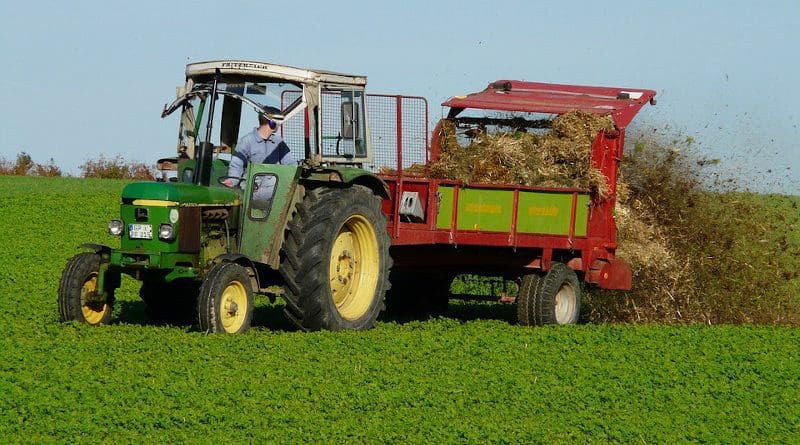Emissions Tied To International Trade Of Agricultural Goods Are Rising
Earth system scientists at the University of California, Irvine and other institutions have drawn the clearest line yet connecting consumers of agricultural produce in wealthier countries in Asia, Europe and North America with a growth in greenhouse gas emissions in less-developed nations, mostly in the Southern Hemisphere.
In a paper published in Science, the researchers report that trade in land-use emissions – which come from a combination of agriculture and land-use change – increased from 5.1 gigatons of carbon dioxide equivalent (when factoring in other greenhouse gas emissions such as nitrous oxide and methane) per year in 2004 to 5.8 gigatons in 2017.
In the paper, the scientists found that land-use change – including clearing of carbon-absorbing forests to create space for farms and pastures – contributed roughly three-quarters of the amount of greenhouse gases driven by the global trade of agricultural goods between 2004 and 2017.
“Roughly a quarter of all human greenhouse gas emissions are from land use,” said co-author Steven Davis, UCI professor of Earth system science. “Our work shows that large shares of these emissions in lower-income countries are related to consumption in more developed countries.”
The top sources of land-use-change emissions during the period studied were Brazil, where the practice of removing natural vegetation such as forests to make room for livestock pastures and farms has caused large transformation of land use in the country, and Indonesia, where ancient, carbon-storing peats have been burned or otherwise eliminated to enable the cultivation of plants to produce palm oil for export to wealthy countries.
About 22 percent of the world’s crop and pastureland – 1 billion hectares – is used to cultivate products destined for overseas consumers, according to the researchers. Commodities such as rice, wheat, corn, soybeans, palm oil and other oil seeds occupy nearly one third of the land used for traded goods and contribute roughly half of traded greenhouse emissions.
The study showed shifts that took place in certain regions between 2004 and 2017: In the early phase, China was a net exporter of agricultural goods, but by 2017, it had become an importer of both goods and land-use emissions, in part from Brazil. At the same time, Brazil’s exports to Europe and the United States, which had been the nation’s largest trading partners in agricultural goods in 2004, declined.
In 2017, the last year the researchers examined, the largest source of export-related emissions was Brazil, followed by Argentina, Indonesia, Thailand, Russia and Australia. The largest net importers of products tied to such emissions were China, the U.S., Japan and Germany, with the U.K., Italy, South Korea and Saudi Arabia following.
In addition to adding greenhouse gases to the atmosphere, human land use practices have caused significant ecosystem disruption, degraded biodiversity, depleted water resources and introduced other types of pollution to local environments.
From an economic standpoint, the exporters producing the highest amounts of land use emissions are also heavily dependent on export agriculture as a contributor to gross domestic product.
Davis said, “We hope this study will raise awareness of the role of international trade in driving land-use emissions. In turn, importers can adopt ‘buy clean’ policies to reduce the most emissions-intensive imports and discourage regions from gaining an environmentally destructive trade advantage. We recognize that several regions, including Europe, the U.S., and China, have seen an increase in efforts taken to improve supply chain transparency in recent years – a good sign indeed.”

